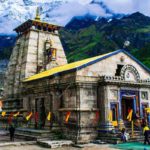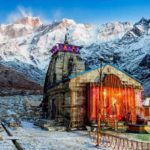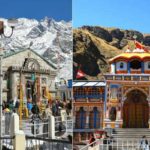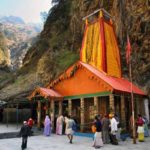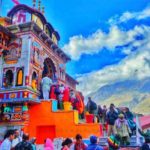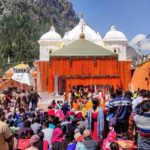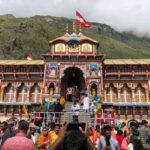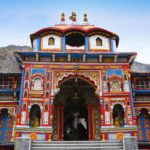Kedarnath Temple is a Hindu temple dedicated to Lord Shiva, located in the Rudraprayag district of the state of Uttarakhand, India. It is one of the holiest pilgrimage sites for Hindus and is part of the Char Dham Yatra, which also includes Badrinath, Yamunotri, and Gangotri. The temple is situated at an elevation of 3,583 meters (11,755 feet) above sea level, in the midst of the snow-capped peaks of the Garhwal Himalayas, near the Mandakini River.
Kedarnath Temple has great spiritual significance and is believed to be one of the 12 jyotirlingas, which are considered to be the holiest abodes of Lord Shiva. According to Hindu mythology, the temple was built by the Pandavas, the legendary heroes of the Hindu epic Mahabharata, as a way to seek forgiveness from Lord Shiva for their sins during the Kurukshetra War. The temple is also mentioned in various ancient Hindu scriptures and has been an important place of worship for centuries.
The temple is made of large stone slabs and has a distinctive architecture with a conical shape, adorned with intricate carvings and sculptures. The inner sanctum of the temple houses a lingam, a symbol of Lord Shiva, which is the main object of worship. The temple is open to pilgrims only for a few months every year, from April/May to November, due to the extreme weather conditions in the region.
The journey to Kedarnath Temple is considered arduous and requires trekking through rugged terrain, but it is considered a spiritually rewarding experience by the pilgrims. The temple and its surroundings offer breathtaking views of the Himalayan peaks, making it a popular destination for not only religious tourists but also nature enthusiasts and adventure seekers. The pilgrimage to Kedarnath is believed to cleanse one’s sins and bestow blessings and is considered a significant event in the life of a devout Hindu.
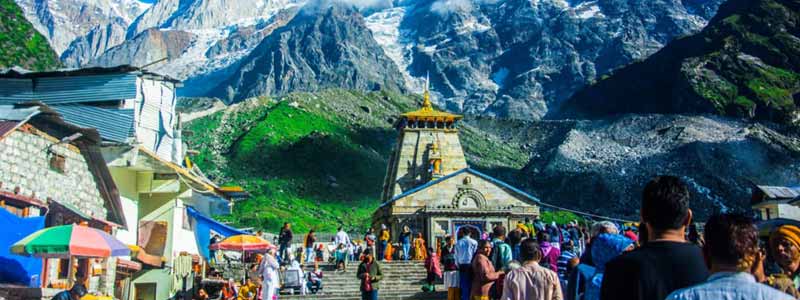
Places to Visit in Kedarnath
Apart from the Kedarnath Temple, which is the main attraction for pilgrims, there are several tourist places to visit in and around Kedarnath. Some of the popular tourist places near Kedarnath include:
- Vasuki Tal: It is a glacial lake located at an altitude of 4,135 meters (13,566 feet) above sea level, about 8 kilometers from Kedarnath. The lake is known for its serene beauty, surrounded by snow-capped peaks, and is believed to be the abode of Lord Vishnu according to Hindu mythology, Char Dham Tour Packages.
2. Chorabari Tal (Gandhi Sarovar): It is a pristine lake located about 3 kilometers from Kedarnath, known for its clear blue waters. It is believed that Mahatma Gandhi’s ashes were immersed in this lake, and hence it is also known as Gandhi Sarovar.
3. Bhairavnath Temple: Located about 500 meters from Kedarnath, Bhairavnath Temple is dedicated to Lord Bhairav, who is considered the guardian deity of Kedarnath. The temple is known for its unique architecture and is visited by devotees seeking blessings and protection.
4. Shankaracharya Samadhi: It is a memorial dedicated to Adi Shankaracharya, a revered Hindu philosopher and theologian who is credited with establishing the Char Dham pilgrimage in Uttarakhand. The Samadhi is located in Kedarnath and is a place of reverence for followers of Adi Shankaracharya’s teachings.
5. Sonprayag: It is a scenic spot located about 20 kilometers from Kedarnath, known for its confluence of rivers Basuki and Mandakini. The place is considered sacred by Hindus and is believed to be the place where Lord Rama performed penance after defeating Ravana, according to Hindu mythology.
6. Gaurikund: It is the base camp for the trek to Kedarnath, located about 16 kilometers from Kedarnath. Gaurikund is known for its hot springs and is believed to be the place where Goddess Parvati performed penance to win Lord Shiva’s heart.
7. Triyuginarayan Temple: It is a famous temple located about 25 kilometers from Kedarnath, believed to be the place where Lord Shiva and Goddess Parvati got married according to Hindu mythology. The temple is known for its unique architecture and is visited by devotees seeking blessings for a happy married life.
8. Rudraprayag: It is a town located at the confluence of rivers Alaknanda and Mandakini, about 72 kilometers from Kedarnath. Rudraprayag is known for its natural beauty, with lush green forests, gushing rivers, and picturesque surroundings.
These are some of the popular tourist places near Kedarnath that you can visit during your trip to this holy pilgrimage site. Each place has its own spiritual and natural significance, making the entire region a unique and awe-inspiring destination for tourists and pilgrims alike Uttarakhand Tour Packages.
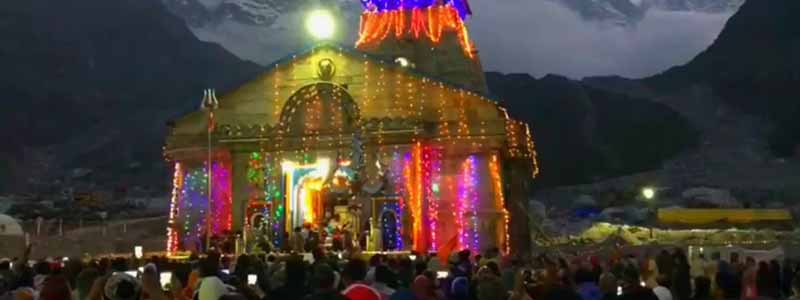
Best Time to Visit Kedarnath
The best time to visit Kedarnath depends on the weather and the accessibility of the region, as it is located at a high altitude in the Himalayas. The temple is open to pilgrims for a limited period of time each year due to the extreme weather conditions in the region. The ideal time to visit Kedarnath is during the following periods:
- Summer Season (May to June): The summer season is considered the best time to visit Kedarnath, as the weather is pleasant with moderate temperatures ranging from 5 to 18 degrees Celsius during the day. The snow starts melting, and the region becomes accessible for pilgrimage after the winter closure. The Kedarnath Temple usually opens in the first week of May and closes in November, depending on the dates of the Hindu festival of Diwali.
2. Monsoon Season (July to September): The monsoon season in Kedarnath is characterized by heavy rainfall, which can lead to landslides and flash floods in the region, making it risky for pilgrimage. The region receives rainfall during July, August, and September, which can disrupt travel and make the trekking routes slippery and challenging.
3. Winter Season (November to April): The winter season in Kedarnath is harsh, with heavy snowfall and freezing temperatures. The region becomes inaccessible due to heavy snowfall, and the Kedarnath Temple remains closed during this period. It is not advisable to visit Kedarnath during the winter season due to extreme weather conditions.
Considering the above factors, the best time to visit Kedarnath is during the summer season from May to June, when the weather is pleasant, and the region is accessible for pilgrimage. It is important to check the current weather conditions and the opening dates of the Kedarnath Temple before planning your visit, as they may vary each year. Additionally, it is advisable to carry warm clothing, rain gear, and be prepared for the challenging trekking routes during the pilgrimage.
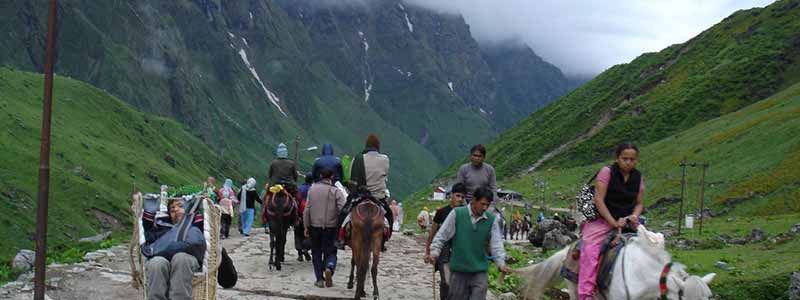
How to Reach Kedarnath Temple
Kedarnath is a high-altitude pilgrimage site located in the state of Uttarakhand, India. It is nestled in the Garhwal Himalayas and can be reached through a combination of road and trekking routes, as there is no direct motorable road to the temple. Here are the common routes to reach Kedarnath:
By Air: The nearest airport to Kedarnath is Jolly Grant Airport in Dehradun, which is well connected to major cities in India. From Dehradun, one can hire a taxi or take a bus to reach Gaurikund, which is the base camp for the trek to Kedarnath. The distance between Dehradun and Gaurikund is approximately 215 kilometers, and the journey takes about 7-8 hours by road.
By Train: The nearest railway station to Kedarnath is Rishikesh, which is well connected to major cities in India. From Rishikesh, one can hire a taxi or take a bus to reach Gaurikund, the base camp for the trek to Kedarnath. The distance between Rishikesh and Gaurikund is approximately 190 kilometers, and the journey takes about 7-8 hours by road.
By Road: Kedarnath is well connected by road to major cities in Uttarakhand. One can reach Gaurikund, the base camp for the trek to Kedarnath, by road from Rishikesh, Haridwar, or other nearby towns. From Gaurikund, one has to trek a distance of about 16 kilometers to reach Kedarnath. The trekking route is well-marked and passes through beautiful landscapes, but it can be physically challenging due to the high altitude and steep terrain. Pony, palanquin, and helicopter services are also available for those who do not want to trek.
It is important to note that the last motorable road point is Gaurikund, and from there onwards, it is a trekking route to Kedarnath. The trekking route is usually open from May to November, depending on weather conditions, and the Kedarnath Temple remains closed during the winter season due to heavy snowfall. It is advisable to check the current road and weather conditions before planning your journey and to be prepared for the challenging trekking route with adequate clothing, food, and water supplies.

